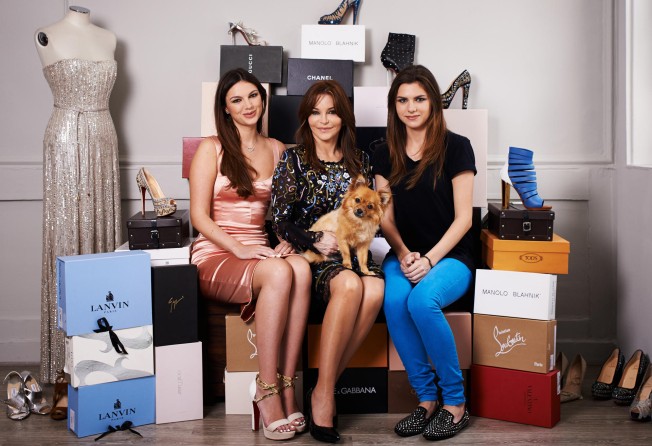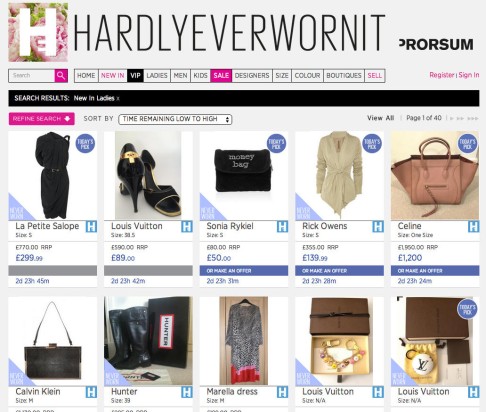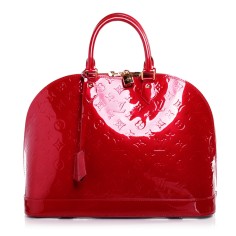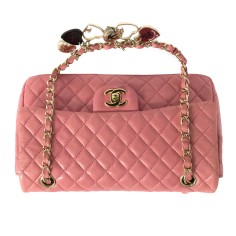Websites that enable users to resell luxury items are gaining popularity
Websites that enable users to buy and sell pre-owned designer label items are gaining popularity, writes Francesca Fearon

We all love a designer label and we all love a bargain, but biannual sales only happen, well, twice a year. So what do we do during those other months when we want to feed our designer habit, but are on a budget?
We turn to the internet.
In the virtual world, several upmarket fashion websites have channels where sale merchandise is available year round. Net-a-porter launched an entire site, called TheOutnet.com full of previous seasons' markdowns.
But there is another route to satisfy discount junkies, and one that savvy shoppers in Europe are latching onto fast: re-commerce sites.
"Re-commerce" is a rather inelegant industry word for pre-owned luxury fashion items that are bought and sold. In Britain and France, sites have opened up such as Hardly Ever Worn It, Vestiaire Collective and Covetique; these are luxury online platforms for selling designer fashion that may or may not have been worn before.
Someone's fashion mistake may be another's must-have. Vestiaire Collective and Covetique's curated sites have fixed prices for the nearly new Saint Laurent, Stella McCartney, Hermès, and so forth. Hardly Ever Worn It works a bit like eBay as an auction site, although it's considerably more sophisticated. So if you are lusting after a Fendi bag, a Chanel dress or a pair of Alexander Wang shoes, these are good places to go hunting.
Each site operates slightly differently. At Vestiaire Collective, you can sell your nearly new items: they will choose what they consider will sell from an analysis of what's trading on their site. After having checked the item's authenticity, they will photograph and post it online, and once it's sold, ship it on your behalf.

Hardly Ever Worn It takes a different approach, relying on the seller to photograph the item along with any tags that prove its authenticity. They trust the seller to show the true condition of the product - for example, illustrating scratches - and to self-upload the picture with a note mentioning the original price. It then goes up for auction for a minimum of three days. When it sells, the website handles the transaction and the seller ships it to the buyer.
The company's commission is 15 per cent on regular consumer to consumer sales, and 30 per cent for the VIP service, where the seller sends the items to company offices where the in-house staff will take care of all the administration, photo and sales details. If an item doesn't sell immediately it will rotate on the system until it sells, or is channelled into one of the regular sales.
Vestiaire Collective was launched in France five years ago by a group with expertise in different areas of fashion, communications and IT, who realised there was a need for a trusted resale site.
One of the founders, Fanny Moizant, who runs the London hub, says they became aware of large numbers of people who had great designer items that they no longer had space for and were looking to resell.
Coupled with what Moizant dubs the "recessionistas phenomenon" - the result of the economic downturn - in France, there was an abundance of fashion bloggers who were reselling items on their own blogs without an e-commerce tool.
Vestiaire Collective brings all of them together on the same platform. The site now has two million users and operates in Europe and the US. Moizant anticipates the market spreading to the East.
Hardly Ever Worn It already operates globally, with sellers from around the world, says founder Sharon Wolter Ferguson, who launched the re-commerce site three years ago with her daughters, Natalya and Tatiana.
Her core markets are Britain, the US, New Zealand, Canada, Hong Kong and Australia. Sales are 120,000 per month.
"I was living in Monte Carlo, my children were at school and I had time on my hands, so I was looking for somewhere to sell my clothes and accessories," says Wolter Ferguson.

Galvanised into action, she researched eBay and wasn't impressed. "If you want to buy a Chanel dress, you don't go to buy it at the equivalent of a chain store."
Wolter Ferguson saw an opportunity to create a platform for women to sell their designer label clothes. Brimming with enthusiasm and armed with an address book of well-connected friends, she launched the site.
At the beginning, her daughter Tatiana appeared on the television programme Made in Chelsea with close friend Chloe Green, daughter of retail billionaire Philip Green.
One of the camera crew leaked rumours that British supermodel Kate Moss was sending limousines full of clothes to the site to sell. That wasn't true at the time, but these days quite a few celebrities such as Sienna Miller, Harry Styles, Tracey Emin and Moss do sell through the site to raise money for charity.
"After sitting in my pyjamas thinking about how I would market the site," says Wolter Ferguson, "I was soon getting glowing reports in the Daily Mail and Grazia."
About 30 per cent of the business comes from celebrities selling their "gifted" designer gear for charity, while the rest is from individuals selling items such as Givenchy boots and Hermès Birkins.
One Birkin sold recently for £3,800 and another luxurious bag for £28,000. Louboutin's classic black Pigalle patent pumps sold for £270: the original price was £395. So the site is a good way to gauge what people will pay for a pre-owned designer item.
These websites have tapped a sweet spot for fashion lovers on a budget, and it's likely consumer bases for pre-owned luxury will spread further around the globe. Clients seem to be more accepting of the idea of pre-owned items.
Judging by the growth of vintage fashion and luxury item sales in recent years in Hong Kong and on the mainland, the opportunity is there.
